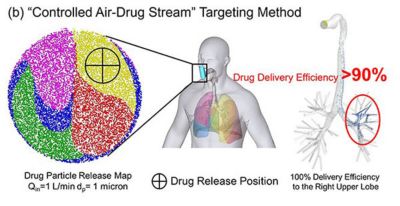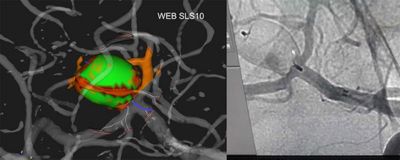-
-
Access Free Student Software
Ansys empowers the next generation of engineers
Students get free access to world-class simulation software.
-
Connect with Ansys Now!
Design your future
Connect with Ansys to explore how simulation can power your next breakthrough.
Countries & Regions
Free Trials
Products & Services
Learn
About
Back
Products & Services
Back
Learn
Ansys empowers the next generation of engineers
Students get free access to world-class simulation software.
Back
About
Design your future
Connect with Ansys to explore how simulation can power your next breakthrough.
Free Trials
ANSYS BLOG
August 07, 2018
Will Digital Twins Improve Healthcare for Their Real-World Counterparts?
Your digital twin will one day inform the treatment your healthcare providers implement.
Healthcare is rapidly embracing digital twin technology. The goal of this trend is to deliver data-driven personalized medicine.
Digital twins are built on computer-based, or in silico, models that are fed individual and population data.
Researchers are aided by these digital representations of human physiology in their studies of disease, new drugs and devices.
Healthcare industry leaders and FDA authorities suggest that digital twins help to accelerate medical innovation and regulatory approval.
In the future, these tools may even help doctors accurately optimize the performance of patient-specific treatment plans.
In short, digital twins can help healthcare providers bring lifesaving innovations to market faster, at reduced costs and with increased patient safety.
Digital Twins Deployed to Optimize the Aerosol Deposition of Medications
Patients receiving aerosol-delivered chemotherapeutic drugs have a lot to lose when tumor-targeting treatments miss their marks or “hit” healthy tissue. Fortunately, tools like Ansys computational fluid dynamics (CFD) can help researchers study conventional drug delivery.
CBBL identified an optimal aerosol release position for a drug so it targets a specific location in the lungs. They achieved this by back tracking the path of the aerosol particles in the respiratory tree.
In fact, researchers at Oklahoma State University’s Computational Biofluidics and Biomechanics Laboratory (CBBL) found that only 20 percent of an inhaled drug reached its target within the lungs. The remainder made its way to noncancerous tissue, often with adverse effects.
CBBL researchers looked to see if restricting the active drug’s particle size and region within the aerosol (versus distributing them evenly throughout the spray) would improve delivery efficiency.
They successfully simulated the aerosol particles’ movement through a digital twin of an adult’s upper airway. The team then varied parameters like the diameters of the particles, inhalation flow rates and the initial locations of the medication within the aerosol. The researchers eventually optimized the medical aerosol to have a delivery efficiency over 90 percent.
The airway configuration belongs to CBBL’s virtual human system — a collection of digital twins that model the respiratory systems of adults and children as they sit and stand. By importing lung geometries from CT/MRI scans, researchers can now create patient-specific twins.
Digital Twins Provid Invaluable Assistance to Brain Surgeons
Digital twins are also smart enough to help medical researchers treat our brains. For instance, France-based startup Sim&Cure has developed a patient-based digital twin for treating aneurysms.
If not treated, a cerebral aneurysm is a possible life-threatening pathology. Sim&Cure uses simulations and digital twins to help neurosurgeons maximize patient safety as they undergo treatment.
Aneurysms are blood vessel bulges that are caused by a weakening in an arterial wall. They can be found in two percent of the population. A small, but terrifying, fraction of these aneurysms can then result in clots, stroke and death.
Brain surgery is typically the last resort to repair aneurysms. Endovascular repair, however, is a less-invasive option that is associated with a lower risk. It uses a catheter-guided implant to shore up damaged arteries and relieve the pressure on the aneurysm caused by irregular blood flow.
Unfortunately, findings by the National Center for Biotechnology Information (NCBI) show that up to 65 percent of all endovascular procedures are geographically challenged (i.e., they miss their marks). For example, if an intrasaccular device doesn’t expand to the volume of the aneurysm, blood can fill the gaps and exert additional pressure.
Sim&Cure’s proposed solution helps surgeons select an optimal implant to form-fit both the cross section and length of the aneurysm. They even won regulatory approval for a digital twin that helps surgeons select and deploy endovascular implants that optimize aneurysm repair.
After the patient is prepped for surgery, Sim&Cure’s software creates a 3D model of the aneurysm and the surrounding blood vessels based on 3D rotational angiography imaging. Sim&Cure’s sizing software uses this personalized model to offer the surgeon a selection of devices appropriate and available for implant. Once the surgeon identifies the device, the software creates an input file for analysis in Ansys Mechanical.
The surgeon can then run 10- to-20-second simulations, rotating and zooming in on the deployed device. This helps the surgeon gain a keen understanding of the interactive relationship between the implant and the aneurysm. In less than five minutes, numerous implants can be assessed to optimize the procedure.
Preliminary trials have been impressive to say the least. While 10 percent of endovascular treatments necessitate follow-up procedures, at the time of this writing, not a single procedure using Sim&Cure’s software has required additional intervention.
Check out Ansys Advantage magazine to learn more about the impact of our company as well as our latest breakthroughs.


